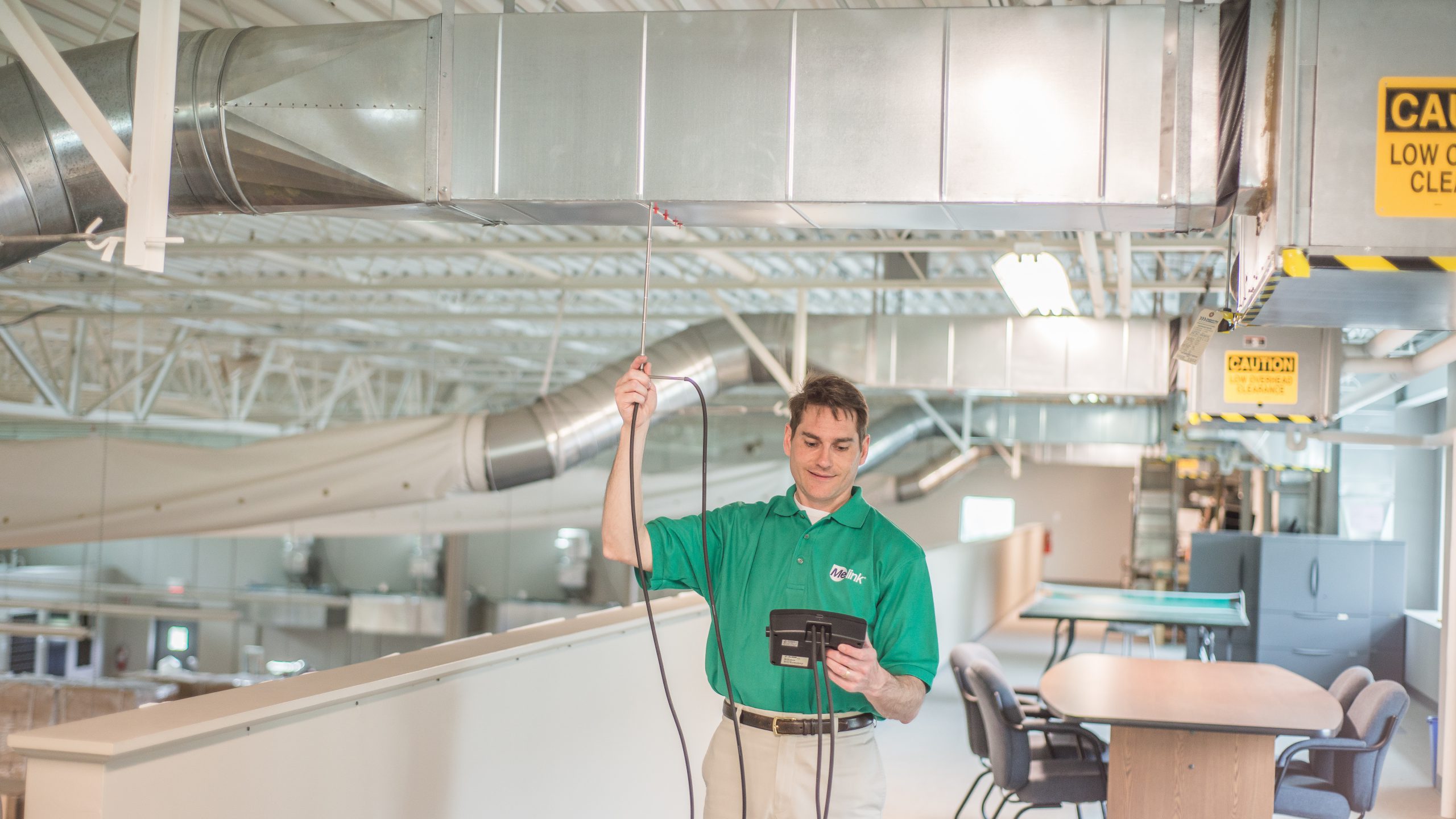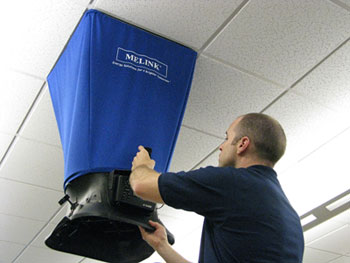Can a building get sick? I’ll give you the answer up front: Yes, sure, most definitely — a building can get “sick.” You may ponder… “But how can a building become sick? It is an inanimate object. It doesn’t live and breathe like humans!” On the contrary, your building is a living object. The main factor making your building come alive is its people: your customers, employees, and outside partners (think mail delivery or an overnight cleaning crew). Let’s dive into what factors can make a building sick and why maintaining positive building pressure is so important in prevention.
What Makes a Building Come Alive?
First, consider what may make your building come alive (or ultimately “infect” it):
- Supplies
The products you bring in (from any point of origin) may have outside contaminants or be perishable. As you know, perishables may emanate odors or fumes. - Chemicals
You must account for chemicals or cleaning supplies in their controlled rooms (where exhaust is extremely important). - Restrooms
Consider the restroom facilities. Restrooms, especially those open to the general public (i.e. in a lobby area) can encounter high volumes of traffic and behaviors that may not meet sanitary standards. - HVAC System(s)
Your HVAC system is a key element bringing your building to life. With proper cleaning and maintenance, they are designed to provide comfort on demand. Heating and cooling are crucial amenities that have grown to be a must-have and are mandated by federal and local guidelines.
When you take all these factors into account, it’s easier to understand how a building can become “sick.”

Facility Managers: How to Prevent Sick Buildings
So how can a facility manager or building owner help to prevent sickness in a facility? As a professional in the HVAC industry, my primary goal is to earn your trust to maintain the wellness of your building’s HVAC system. Think about it — you can’t control others’ actions. There is no way to determine someone’s state of health as they are in your establishment. But you can control the HVAC system and make sure it is properly maintained to be a healthy system!
A little-known fact about HVAC systems that I will stress the importance: FRESH OUTSIDE AIR IS NEEDED TO MAINTAIN A POSITIVE BUILDING PRESSURE AT ALL TIMES. What does this mean, and why is it important?
- Your restaurant, retail store or office building, has many moving parts to bring it alive, has to breathe. Like any living thing, it requires oxygen to replace the carbon dioxide. The equation should result in bringing in a greater amount of fresh air than the carbon dioxide, chemicals, fumes/odors, and cooking effluents that the building creates. When this happens, there should be a slight positive pressure from the inside of your establishment that pushes outward at your doors and drive-thru windows. A proper HVAC test and balance (TAB) by an NEBB-Certified firm like Melink can help you achieve this goal.
- A common oversight that people make is assuming, “My building is positive. We’re in good shape.” But how sure are they that the lungs of the HVAC system are clean and free of operational damages? Many times, I have encountered damaged and clogged filtration components within an HVAC system that may lead to costly repairs to your equipment and structural damages:
- Clogged or missing outside air intake filters
- Clogged, missing or inadequate air filters
- Clogged evaporator and condenser coils
- Clogged and inadequate fan blower wheels
- Mold and mildew
- Trapped small animals that lead to contaminations
- Contaminated duct work that eventually shows up on the supply, return and exhaust grilles throughout the establishment

All these issues work together to create a sick building. The opposite of positive pressure is that dreaded negative pressure. Every time your facility’s doors open, all of the outside air conditions are sucked into the building. These elements can be hot or cold air, humidity, airborne pathogens, and odors. The humidity attaches to the chilled supply diffusers and grilles, creating moisture buildup that drips onto your floors, tables, customers, and clients.

Of course, it’s not feasible for a facility manager to know the ins and outs of every HVAC system of every facility he/she manages. So let us do the work for you! Melink Corporation’s T&B technicians can be your eyes and ears to help your facilities maintain positive building pressure. We are an army of application engineers with skilled LEED and NEBB certifications. Our company is nationwide and has more than 30 years of experience. Along with services that will help you on your way to a healthy building, we offer a monitoring system and demand ventilation systems that will alert you when problems or concerns arise. These services, along with reliable routine maintenance will minimize uninterrupted service to your most important people. We can help you protect your customers, employees, and outside partners from sick buildings.




 being the new battlefield, companies are changing their approach, offerings, and business practices. Sales teams are working harder to learn their customers and their customer’s business, so they can create the “wow”. Hotel managers, restaurant chains, and even doctors’ offices are focused on creating an experience that knocks their customers socks off, instead of just standard practices.
being the new battlefield, companies are changing their approach, offerings, and business practices. Sales teams are working harder to learn their customers and their customer’s business, so they can create the “wow”. Hotel managers, restaurant chains, and even doctors’ offices are focused on creating an experience that knocks their customers socks off, instead of just standard practices. What happens if you fail to provide a positive customer experience? According to a recent study, 67% of customers mention bad experiences as a reason for churn and only 1 in 26 unhappy customers complain. That means companies not focused on the customer experience will lose customers well after it’s too late! Most of this is the result of what I refer to as “sales autopilot”. When you’re there trying to make it look like your product is perfect for them, without the data, you end up losing trust with them. Trust, brand and customer experience are all built on honesty. And honesty is knowing when your product won’t be a perfect fit for everyone. Therefore it’s so important to stop selling and start solving!
What happens if you fail to provide a positive customer experience? According to a recent study, 67% of customers mention bad experiences as a reason for churn and only 1 in 26 unhappy customers complain. That means companies not focused on the customer experience will lose customers well after it’s too late! Most of this is the result of what I refer to as “sales autopilot”. When you’re there trying to make it look like your product is perfect for them, without the data, you end up losing trust with them. Trust, brand and customer experience are all built on honesty. And honesty is knowing when your product won’t be a perfect fit for everyone. Therefore it’s so important to stop selling and start solving!


